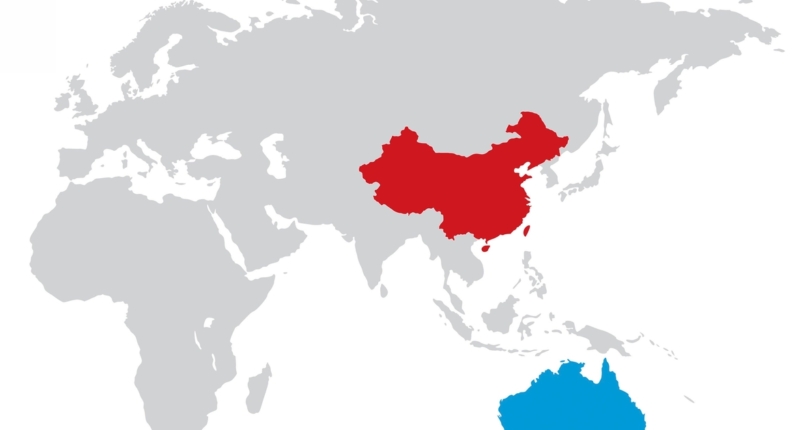Australia and China have seen significant diplomatic shifts, following the Australian government’s change in leadership in 2022. Two-way trade between the two countries continues to thrive, with many opportunities for cross-border collaboration and investment. However, businesses must be aware of the shifting regulatory landscape, such as China’s increased legal regulation of technology and innovation, as well as Australia’s foreign investment approval regime changes. Additionally, there is a growing interest in the development of the digital RMB, China’s central bank digital currency, which may eventually become an alternative to the US dollar for international trade. In terms of cross-border collaboration, businesses may consider working in AI, where Australia has seen an increasing interest among Chinese researchers to work with Australian counterparts with AI expertise.
Australia-China Cross-Border Business Collaborations in 2023 – Key Policy Considerations
The ongoing effects of the events of 2022 are evident as the Year of the Rabbit progresses. Following a change in Australia’s federal government in 2022, the Australian and Chinese trade ministers met virtually for the first time in three years, and Chinese President Xi Jinping held formal talks with an Australian Prime Minister for the first time since 2016. The opening of international borders in 2022 and China’s end to its COVID-zero policy in late 2022 have enabled increasingly free travel between the two countries. This has provided more opportunities for cross-border business collaborations and relationships between Australia and China.
China remains Australia’s largest trading partner despite continuing geopolitical tensions, with two-way trade between the countries thriving. Outbound trade and investment opportunities for Australian companies exist in healthcare, technology, food and beverage, agribusiness, innovation, and renewable energy. High-end manufacturing, healthcare, education, agribusiness, tourism, and hospitality remain key sectors for inbound opportunities from China.
However, the Australian Government’s new stance that trade and investment with China will no longer take priority over Australia’s strategic interests has significant implications for how companies should approach cross-border business. Commercial opportunities will need to be pursued within a context where engagement will only be encouraged if it is in Australia’s national interest. Given that opportunities for commercial collaboration with long-term success are becoming relatively difficult to pinpoint, it is important for Australian companies to understand how key regulatory and policy developments in China and Australia will impact commercial relationships and opportunities. Companies will need to be clear-eyed and considered in how they pursue opportunities.
One such policy consideration is the continuing, overarching policy of self-sufficiency. China’s policy shift towards self-sufficiency is having an impact on cross-border business collaborations, particularly in sectors such as agriculture, manufacturing, and technology. Australian companies doing business with China will need to take this policy into account when considering opportunities for collaboration.
In summary, the events of 2022 have had a significant impact on Australia-China cross-border business collaborations. While opportunities for collaboration still exist, companies will need to navigate an increasingly complex business landscape, taking into account key regulatory and policy developments in both countries. The continuing, overarching policy of self-sufficiency in China is one such consideration that companies will need to keep in mind when pursuing opportunities for collaboration.
Understanding China’s Policy-making for Business in 2023
When doing business with China, it is crucial to understand the underlying principles of China’s policy-making. “Self-sufficiency” has been a recurring theme in Chinese policy announcements and strategies for many years, as China aims to mitigate the impact of global volatility and international vulnerabilities. While the ultimate goal is to minimize reliance on imports from foreign countries, foreign players will still have opportunities as the process plays out. This is exemplified in “dual circulation,” a principle often cited in Chinese government strategies that promote increasing reliance on the domestic market while remaining open to export-oriented development. China’s Development Research Centre of the State Council has recently emphasized the need to support “high-quality development” through opening up to foreign investment, indicating the continued importance placed on foreign investment throughout 2023.
China is also undertaking significant legal reform to encourage foreign investment and collaboration. In January 2023, the China National Intellectual Property Administration issued Draft Amendments to the Trademark Law of the People’s Republic of China, proposing major reforms to address bad faith trademark filings, trademark hoarding, and malicious trademark litigation. The amendments’ legislative purpose references promoting “high-quality development,” indicating its role to reassure and encourage foreign companies to continue playing a role in assisting China to achieve the goal of “high-quality development.”
However, the policy of “self-sufficiency” will mean that opportunities need to be balanced against risks, even in the technology and innovation sectors. The Made in China 2025 strategy is the Chinese government’s ten-year strategic plan to develop domestic manufacturing through increasing high-tech and high-end manufacturing. Underlying this plan is the aim to reduce dependence on foreign technology. This has created a significant opportunity for cross-border collaboration as Chinese companies seek foreign expertise to assist with developing this sector. In particular, China has rapidly accelerated its research and development in AI, with increasing recognition of its efforts in the AI sector.
Technology and Innovation – AI and Key Legal Developments
As China continues to pursue self-sufficiency, it is crucial to keep in mind Australia’s role in cross-border collaborations, particularly in the technology and innovation sectors. The policy of self-sufficiency will inevitably mean that opportunities need to be balanced against risks. Australian companies looking to collaborate in China’s technology and innovation sector need to be aware of China’s ultimate goal of self-sufficiency. Additionally, Australian companies must stay up to date on key legal developments in China, such as the Draft Amendments to the Trademark Law of the People’s Republic of China, to ensure they are well-equipped to do business in China.
Opportunities and Challenges for Australian Companies in China’s AI Industry
Collaboration in the AI sector between Australia and China has seen significant growth in the past decade, with increasing interest among Chinese researchers to work with Australian counterparts who have AI expertise. However, as with other technology and innovation fields, swift advancements in AI technology have also prompted increased regulation in China.
China’s 14th Five-Year Plan highlights the need to establish legal and regulatory frameworks around AI, which will pose challenges for businesses collaborating in the technology and innovation sector. For instance, regulations around AI-generated “deep-fakes” were introduced in January 2023, with more legal regulation of AI and other technology expected.
In addition, patent protection is a priority in China, with the National Intellectual Property Administration issuing a revision of the draft Patent Examination Guidelines in late 2022 to further refine Chinese patent law. While this is a positive development for Australian businesses seeking to do business with Chinese companies in the tech and innovation sector, they should remain aware that there is still much progress to be made in this space.
Australia’s Foreign Investment Laws
Collaboration opportunities in China’s AI industry are not without challenges for Australian companies. Significant changes to Australia’s foreign investment approval regime will continue to create challenges and increase uncertainty for investors. The enactment of the Foreign Investment Reform (Protecting Australia’s National Security) Act 2020 and its accompanying regulations, as well as amendments to the Security of Critical Infrastructure Act 2018, have signaled increased scrutiny by the Australian Government of foreign investment, especially in sensitive sectors. Australian companies seeking to participate in cross-border collaboration and investment in China should be aware of the changing foreign investment regulatory landscape and seek legal advice on investment risks and volatility.
Digital RMB
Another development to watch is the rollout of China’s digital currency, the Digital RMB, which has been piloted in various regions of China since 2020. The Digital RMB could have significant implications for cross-border transactions and international business with China. While it is still in the testing phase, Australian companies should keep an eye on this development and consider how it may affect their business operations.
The Rise of Digital RMB: Implications for International Trade
As China leads the way in central bank digital currencies (CBDCs), businesses with international trade and operations should pay attention to important developments in the digital currency space. In recent years, China has invested significantly in developing a digital form of its currency, the renminbi (RMB). Digital RMB is a CBDC, meaning that it is issued by China’s central bank rather than a commercial bank.
Digital RMB could allow for faster, more efficient, and cost-effective cross-border transactions due to its non-reliance on commercial banks and messaging services, and limited need for intermediaries in settlements, instead using a direct peer-to-peer network between payers and payees.
China has been developing the digital RMB since 2014, positioning itself as the leader in the CBDC space. With the rapid development of the digital RMB and China’s significant presence in international trade, many predict that the digital RMB could become an alternative to the US dollar for international trade, ultimately reducing dependence on the dollar for cross-border settlements.
Businesses should consider the opportunities and implications presented by the rise of the digital RMB, and how it may affect their international trade operations. The internationalisation of the RMB could also further bolster China’s significance and influence in the global trade space.
It is important to note that the information provided in this publication is of a general nature and is not intended to address the circumstances of any particular individual or entity. While efforts have been made to provide accurate and timely information, the accuracy of the information cannot be guaranteed at the date it is received or in the future.
If you have any questions about how the rise of digital RMB may impact your business, it is recommended to seek advice from a member of our team.
Don’t miss interesting posts on Famousbio










